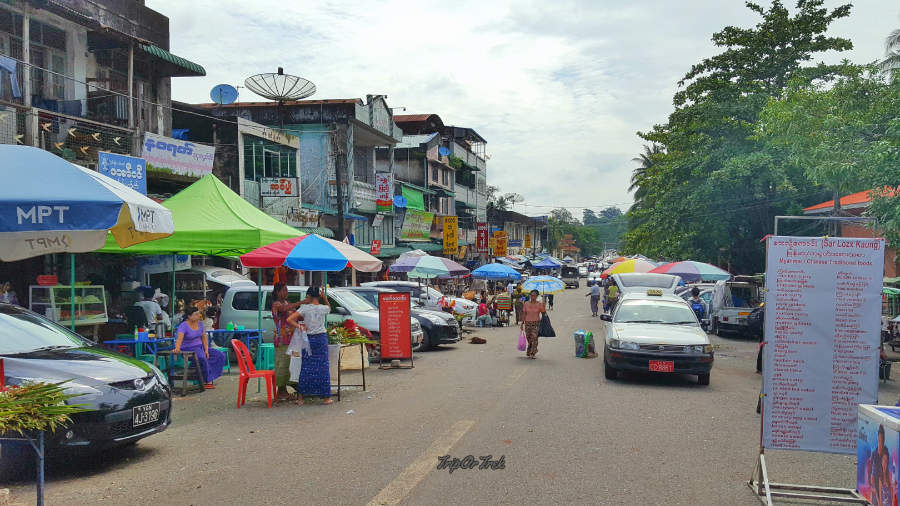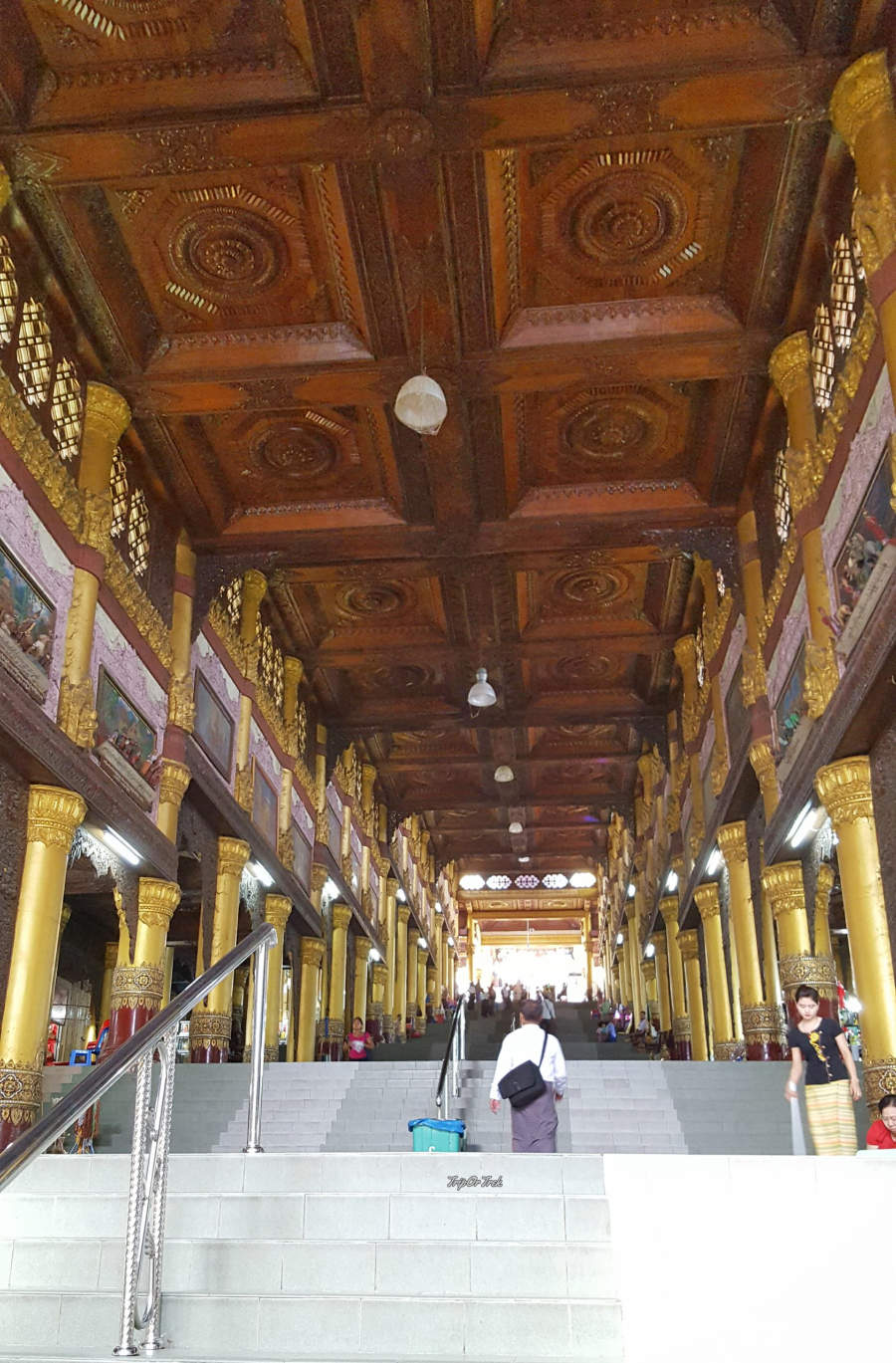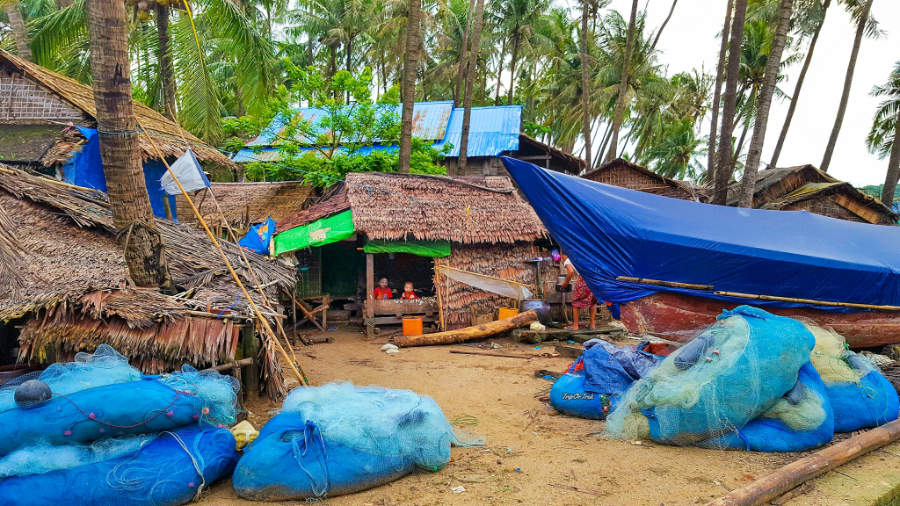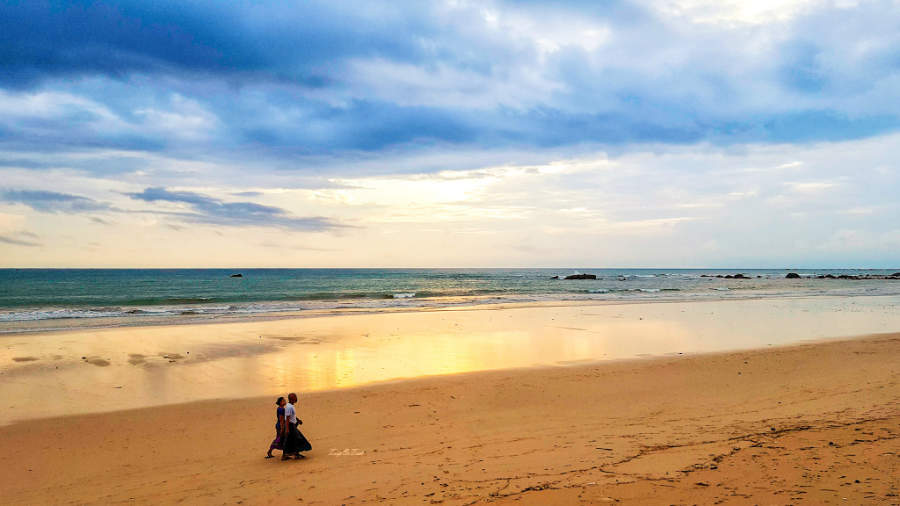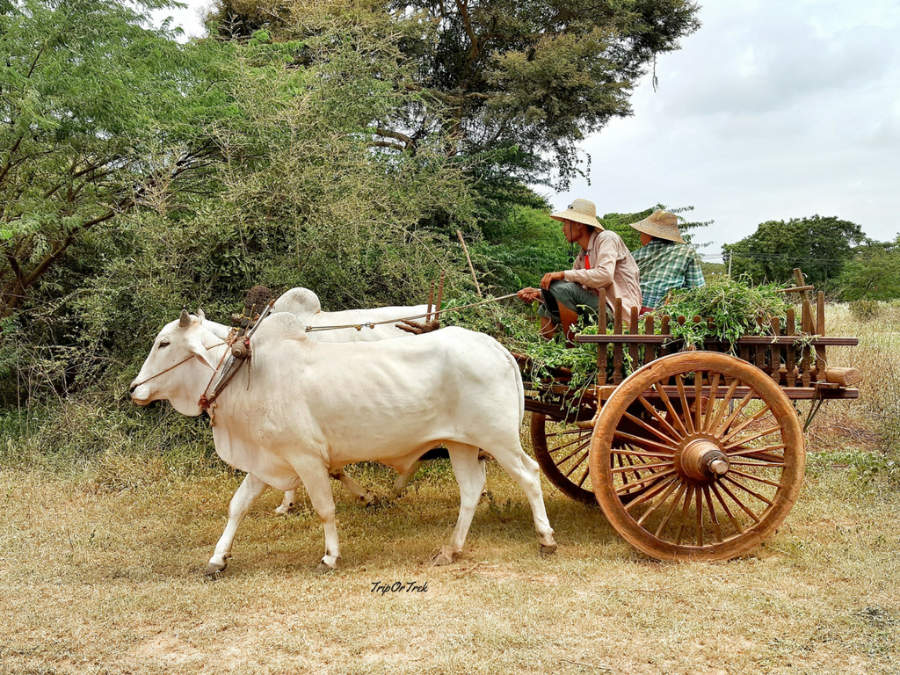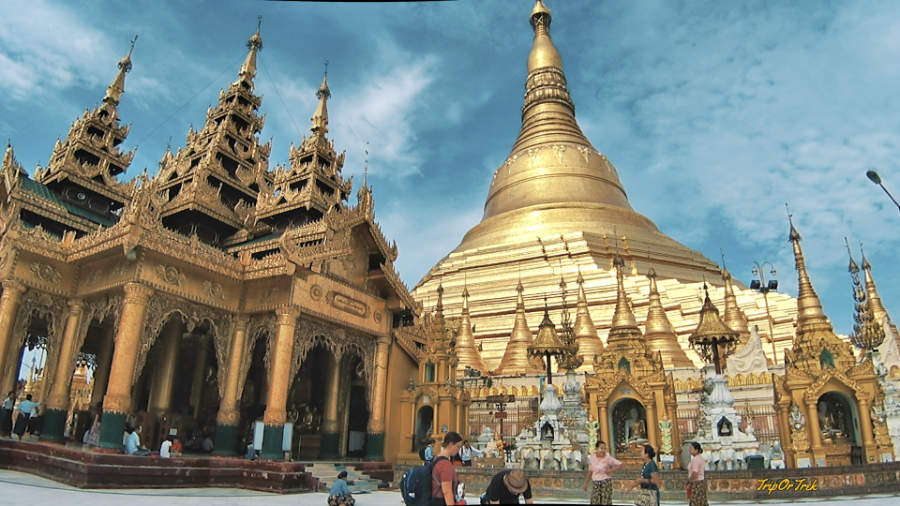
With its golden stupa built on a green hill, the Shwedagon Pagoda leans on Yangon sheet roofs as an oasis of peace in the city’s chaos. Faithful from all over Asia visit it every day because within it contains the most precious treasures of Myanmar.
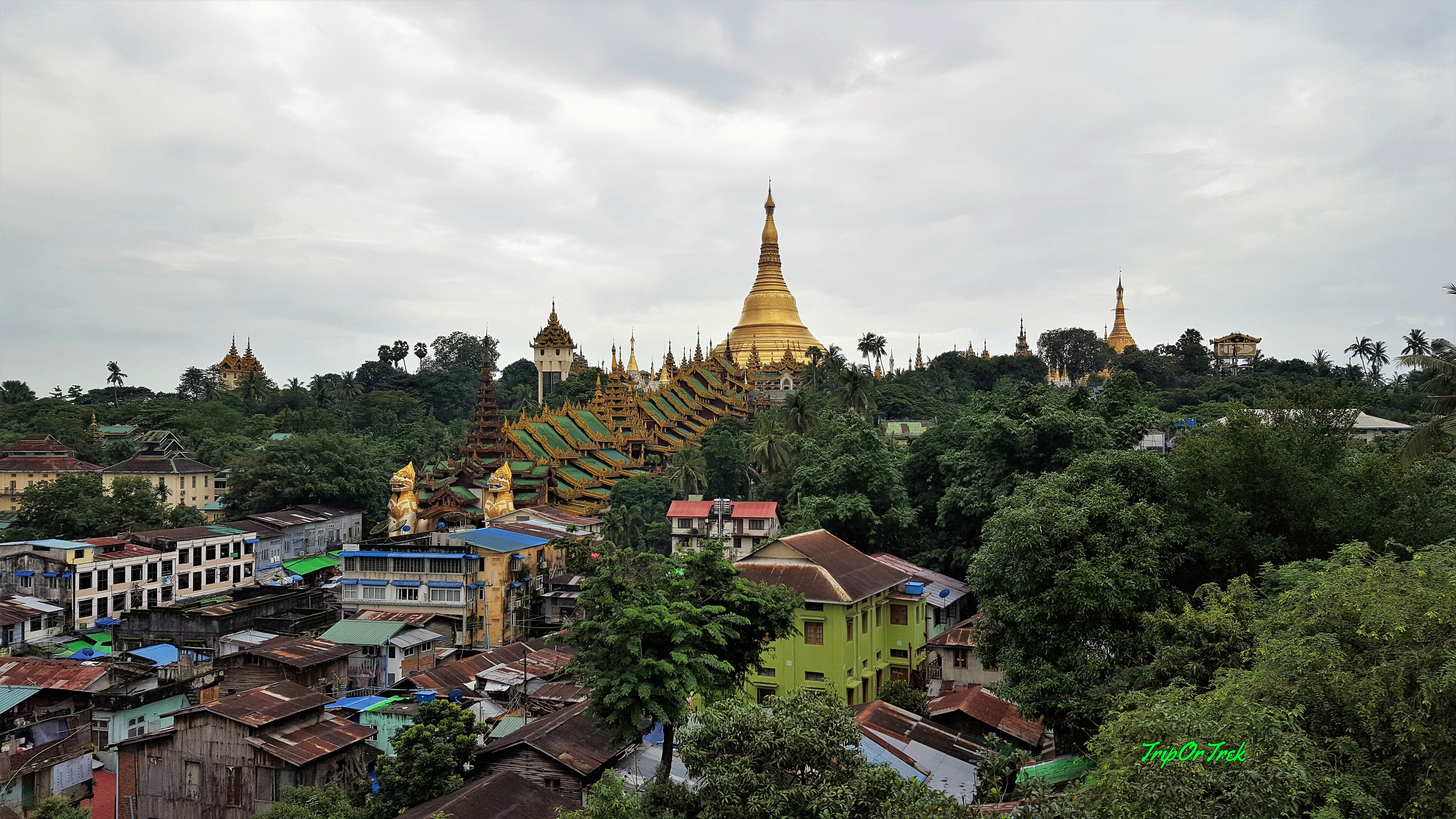
We visited it early in the morning passing through the East entrance, the closest to our hotel, and so we had the opportunity to discover our folkloristic neighborhood and its inhabitants as well.
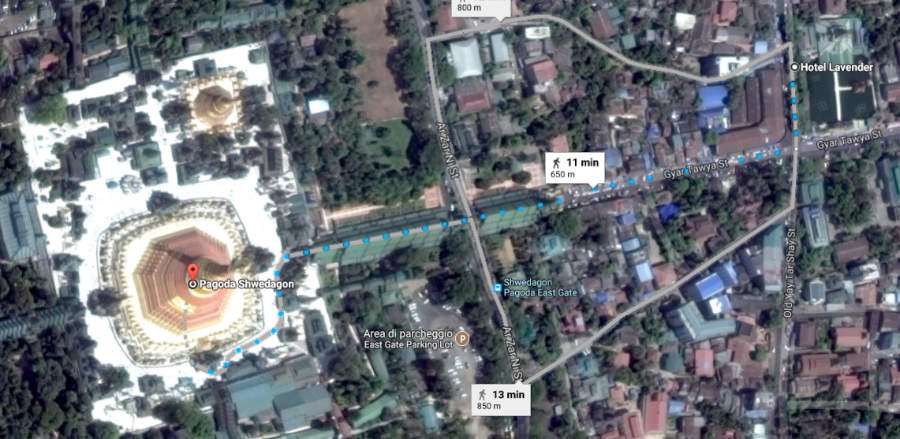
We passed shops of artisans who carved wood, and a market made up of narrow passages, almost claustrophobic, which made it a maze of fabrics and sundries. We greeted a woman who sold hundreds of small birds crammed into a large cage, and purchased, for the insistent requests of three children, plastic bags with which to bring the shoes in the long barefoot climb to the main pagoda.
Step by step we walked through a stairway covered with a decorated wooden ceiling, on whose sides there were shops with religious objects and food. The stairs ended in front of a metal detector checkpoint after which was located the ticket office: “Five dollars for foreigners” warned us the shop assistant. We paid them willingly because what we were about to admire left us speechless.

Gold, diamonds, rubies and emeralds are just some of the hundreds of precious stones placed on the zedi, that is the summit of the Shwedagon Pagoda 99 meters high, but that treasure of glittering gems was just the wrapper of a great patrimony guarded for centuries. The legend, in fact, says that the Shwedagon Paya, the great Pagoda was born from the encounter between two merchants, the brothers Tapussa and Ballika, and Buddha who entrusted them eight of their hairs to bring them to the king of Burma, Okkalapa. When the sovereign received them as a gift, he enclosed them, along with other relics, in a gold stump, which in turn was included in other blocks of silver, pond, copper, lead, marble and iron. The original temple was built between the 6th and the 10th centuries on the Singuttara Hill, visible from every corner of the city, and covered in gold plates from the 15th century. Over the years, the structure was affected by earthquakes and looting, but despite this, it continues to shine, while its four accesses, one for each point cardinals, are protected by pairs of gigantic Chinthe, 9 meters tall statues of mythological creatures half lions and half griffins.
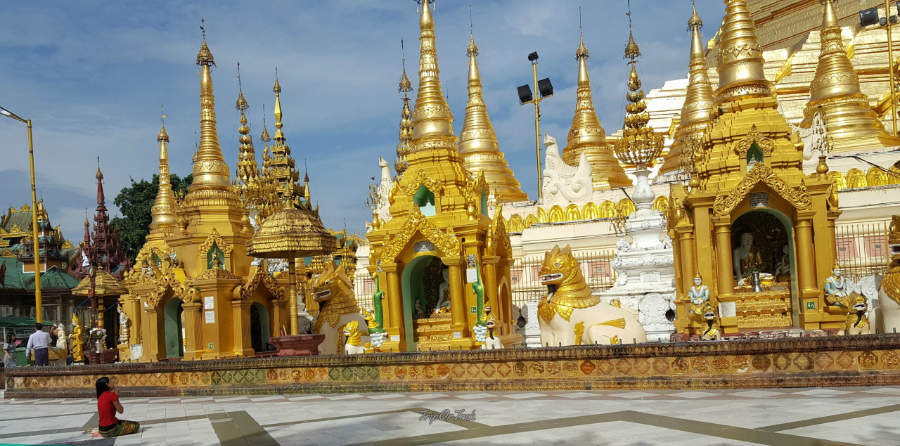
Walking barefoot on the rough green plastic mats surrounding the main stupa, while the smell of incense scented the air, we noticed that every believer, carrying flowers, kneels to pray in front of one of the twelve temples that, around the large stupa, indicated the planetary points corresponding to the days of birth. Fascinated by those rituals, we silently sat on the outside steps of a temple, while inside an old woman with a wrinkled face and curve back, with a small broom cleaned the floor in front of the benevolent smile of a large statue of Buddha. We were still in that position and in silent, enjoying the peace of the place, when two ladies have interrupted our thoughts to ask us to pose for a photo. In that moment we realized that we were the only Western persons present.
Without realizing, we had become a tourist attraction and, embarrassed for the interest we were stirring up, we admired for last time the gold pagoda before we headed back to the bustling and chaotic streets of Yangon…..The story continues in the next article.

Viaggio e racconto il tuo territorio scrivendo di turismo, marketing territoriale e storytelling nel mio blog TripOrTrek



